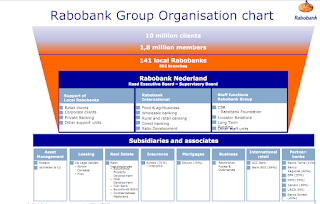To-do-list (out) Agenda (in)
Organiseren is ook mode gevoelig. Waar men vroeger werkte met een TODO-LIST, vindt men nu de AGENDA beter.
Er zijn inderdaad verschillen. Een todo-list kijkt vooral naar het verleden, een agenda kijkt naar de toekomst en dat klinkt positiever. Vooral voor ZZP'ers die zichzelf moeten motiveren is een agenda belangrijk. Maar het werk verandert er niet door. En is het verschil niet grotendeels cosmetisch? Wat vroeger #1 bovenaan de doen-lijst stond, staat nu vol omcirkeld op de agenda.
Zelf werk ik enkel met een agenda, en een todo-lijst is een soort memo waar ik zaken opschrijf wanneer ik ergens aan denk. Misschien is de hybride vorm van zowel het een als het ander de beste oplossing.
Toch kan perceptie helpen om werk een nieuw gezicht te geven. Van het Zeignarik-effect had ik nooit gehoord:
Er zijn inderdaad verschillen. Een todo-list kijkt vooral naar het verleden, een agenda kijkt naar de toekomst en dat klinkt positiever. Vooral voor ZZP'ers die zichzelf moeten motiveren is een agenda belangrijk. Maar het werk verandert er niet door. En is het verschil niet grotendeels cosmetisch? Wat vroeger #1 bovenaan de doen-lijst stond, staat nu vol omcirkeld op de agenda.
Zelf werk ik enkel met een agenda, en een todo-lijst is een soort memo waar ik zaken opschrijf wanneer ik ergens aan denk. Misschien is de hybride vorm van zowel het een als het ander de beste oplossing.
Toch kan perceptie helpen om werk een nieuw gezicht te geven. Van het Zeignarik-effect had ik nooit gehoord:
onze hersenen verwerken onverwerkte en verwerkte taken anders. Een niet volbrachte taak blijft in ons hoofd rondzingen...
Dat hoeft niet altijd slecht te zijn. Wanneer ik niet kan slapen door een niet volbrachte taak die rondzingt dan betekent dat vaak dat ik nog niet het juiste eindontwerp heb gevonden. Laat maar even rondzingen dus. Maar met een lijst aan taken kan dit problematisch worden. Dat wel.
Is er een verschil tussen bedrijven en personen, als het gaat om deze lijst?
Misschien niet precies hetzelfde als een to-do-list, maar ieder bedrijf heeft wel een issue #1: het punt dat bovenaan de agenda staat. Hier zie je dat agenda en lijst kunnen samenvallen. De lijst of agenda kan vol staan met andere zaken, maar dit issue is top priority. #1.
Voor personen kan dit vergelijkbaar werken. Wat is jouw #1 issue dat je aandacht wilt of moet geven? OF het nu op de dagelijkse agenda staat of op een lijst. Het staat ergens bovenaan.
Dan is er ook nog zoiets als een Not-To-Do List.
Picture yourself entering a supermarket, with a to-do-list. In a mechanical way you hit the rows and grab the items that are on the list. On your way out you think quickly whether you have left something out, but you can think of anything…
Organizing is often about things that need to be done. It is about planning, setting priorities and an instrument like a to-do-list is a way to achieve this. The to-do-list reminds you of your priorities, it is a silent secretary showing you the way to your next appointment. A to-do-list has a positive focus. You drag important items to this list because they enable to achieve your goal.
So far so good. But there is more, for example when you ask the question; “why do I need such a list, could I do without? And what would I need instead? Apparently there are other items – not on the to-do-list – which distracts you and make that you do not achieve your goal.
Amongst these Not-to-Do items are those nasty habits that lead you nowhere. Perhaps you remember an issue or two that you would write on such a list if there was one. The thing I would put on the list – and check once I arrive at the supermarket – is to take it easy. Think about the meal to prepare and what you need. And above all, what do I tend to forget again and again.
First of all it does train-my-brain and secondly I become more confident. Confident that whatever I’m planning or preparing, I will deliver for the simple reason that I’m concentrated on the job. I no longer need the to-do-list, just a simple note to remind me to focus on no to rush, or to … whatever is on the not-to-do list.
Hoe vertaal je dit naar een agenda?
Is er een verschil tussen bedrijven en personen, als het gaat om deze lijst?
Misschien niet precies hetzelfde als een to-do-list, maar ieder bedrijf heeft wel een issue #1: het punt dat bovenaan de agenda staat. Hier zie je dat agenda en lijst kunnen samenvallen. De lijst of agenda kan vol staan met andere zaken, maar dit issue is top priority. #1.
Voor personen kan dit vergelijkbaar werken. Wat is jouw #1 issue dat je aandacht wilt of moet geven? OF het nu op de dagelijkse agenda staat of op een lijst. Het staat ergens bovenaan.
Dan is er ook nog zoiets als een Not-To-Do List.
Picture yourself entering a supermarket, with a to-do-list. In a mechanical way you hit the rows and grab the items that are on the list. On your way out you think quickly whether you have left something out, but you can think of anything…
Organizing is often about things that need to be done. It is about planning, setting priorities and an instrument like a to-do-list is a way to achieve this. The to-do-list reminds you of your priorities, it is a silent secretary showing you the way to your next appointment. A to-do-list has a positive focus. You drag important items to this list because they enable to achieve your goal.
So far so good. But there is more, for example when you ask the question; “why do I need such a list, could I do without? And what would I need instead? Apparently there are other items – not on the to-do-list – which distracts you and make that you do not achieve your goal.
Amongst these Not-to-Do items are those nasty habits that lead you nowhere. Perhaps you remember an issue or two that you would write on such a list if there was one. The thing I would put on the list – and check once I arrive at the supermarket – is to take it easy. Think about the meal to prepare and what you need. And above all, what do I tend to forget again and again.
First of all it does train-my-brain and secondly I become more confident. Confident that whatever I’m planning or preparing, I will deliver for the simple reason that I’m concentrated on the job. I no longer need the to-do-list, just a simple note to remind me to focus on no to rush, or to … whatever is on the not-to-do list.
Hoe vertaal je dit naar een agenda?
--



Reacties